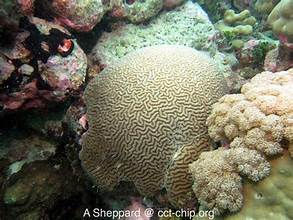Economic Resources

Strategic & Geopolitical Value
Due to its strategic military use and conservation policies, the archipelago’s economic resources are largely untapped or restricted, with no permanent civilian population since the late 1960s.
Although not a conventional "economic resource," the Diego Garcia military base provides immense strategic value:
-
Leased to the UK, and in turn to the United States, generating tens of millions of USD annually (exact figures are classified).
-
The base includes extensive infrastructure, including ports, airstrips, warehouses, and fuel storage, indirectly contributing to the regional economy via logistics contracts, satellite services, and geo-surveillance.

Marine Resources
A. Fishing (Tuna Industry)
-
Primary economic activity: Licensing of tuna fishing to foreign fleets (mainly from the EU and Asia).
-
Controlled by the BIOT Administration, generating an estimated US$2 million to $3 million annually.
-
Fish stocks include:
-
Yellowfin tuna
-
Bigeye tuna
-
Skipjack tuna
-
-
All fishing is regulated by the BIOT's Marine Protected Area (MPA), which bans fishing in most zones except in special permits.
B. Marine Biodiversity (Potential Blue Economy Assets)
-
One of the most pristine coral reef systems on Earth (including the Great Chagos Bank, the world’s largest coral atoll).
-
Potential (currently restricted) for:
-
Bioprospecting (marine genetic resources for pharmaceuticals or cosmetics).
-
Scientific research licenses.
-


Courtesy: Clément Siatous
Land-based Resources (Limited)
A. Coconut & Copra (Historical)
-
Until 1973, copra (dried coconut meat) was produced on plantations managed by the Chagos-Agalega company.
-
19th–20th century economy of the archipelago was almost entirely based on plantation labor (largely by indentured workers from Mauritius and Seychelles).
B. Guano and Sand (Minimal)
-
Small historical use of guano (bird droppings used as fertilizer) and sand extraction, no longer practiced due to ecological protection.


Infrastructure & Services
(Restricted to Diégo Gardia)
A. Military Contracting & Support
-
The U.S. military base at Diego Garcia supports:
-
Civilian contractors (including logistics, cleaning, catering, and engineering).
-
Service industries worth hundreds of millions USD over decades.
-
These are not integrated into a local economy as there is no local population.
-
B. Transport and Fuel Storage
-
Diego Garcia functions as a logistical hub in the Indian Ocean.
-
Large-scale fuel storage supports U.S. and allied naval operations, with potential civilian spin-off value if future demilitarization occurs.

Environmental Conservation
as an Economic Resource
A. Marine Protected Area (MPA)
-
Covers over 640,000 square kilometers of ocean.
-
Although controversial (used to block resettlement), the MPA creates potential for:
-
International conservation funding
-
Marine carbon credits
-
Scientific tourism
-
UNESCO World Heritage status if governance is restructured
-

Future Resources (Post-Resettlement)
A. Eco-Tourism
-
High-end, low-impact tourism (like Seychelles and Maldives model)
-
Diving, birdwatching, historical-cultural tourism (e.g., old plantation ruins, Chagossian heritage)
B. Renewable Energy
-
Solar and ocean thermal energy potential due to isolation and sunlight levels
C. Biotech & Marine Research
-
Deep-sea research stations
- Marine biotech labs
-
University-affiliated fieldwork centres

In a Nutshell
The Chagos Archipelago's economic future will depend on the Resettlement of the Chagossians, as well as:
-
Solutions to Geopolitical disputes
-
Military restrictions, and
-
Environmental protections
-
Ecological preservation commitments
-
Mauritius' capacity to balance development and conservation
-
Ecotourism
-
Sustainable fisheries
-
Scientific outposts and research tourism